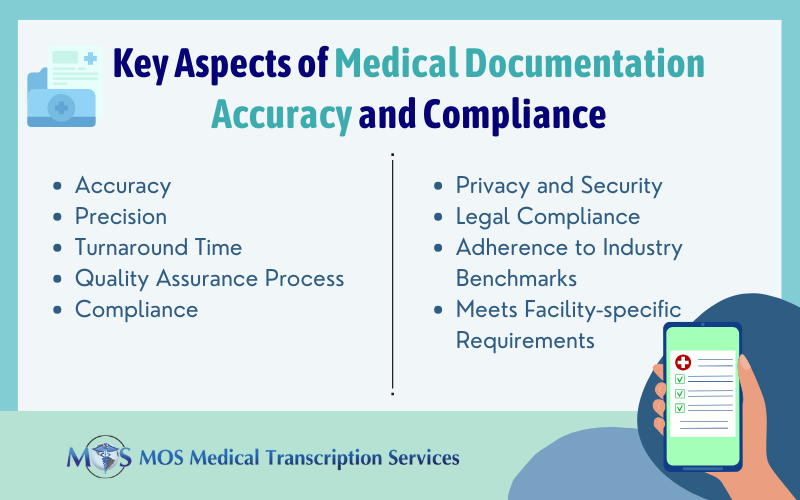
Table of Contents
When a doctor refers a patient to another doctor, they typically receive an order for a consultation report. The consulting doctor is an expert in a field unrelated to the one the other doctor specializes in, necessitating the need for a second opinion in the patient’s case. The patient’s condition or disorder is briefly described in the consultation report, and if the consultation requires it, an exam is included as well. The strategic plan the doctor would want to implement to treat the patient’s ailment will be discussed at the conclusion of the session. Experts from a medical transcription service transcribe consultation reports into the format specified by the doctors.
Purpose of Consultation Reports
Reports from consultations are utilized to outline the patient’s past experiences as well as the main justification for receiving a more effective treatment. A concise report will explain the patient’s condition to the additional doctor. In hospitals, such as an emergency room, consultation reports are common when a primary care physician provides the initial diagnosis and refers the patient to a specialist. A doctor and a patient may feel more at ease and confident after having another person assess the situation. It also creates opportunity for research into additional medical specialties and patient treatment choices.
Specifications in a Consultation Report
A consultation report will begin by including some specific details about the report and patient – their demographics, the date, and the doctors that referred them. More fundamental details such a patient’s ID number and birthdate are also included. A thorough summary of the patient’s present problems will follow the succinct statement outlining the rationale for the consultation.
The doctor will list to the patient’s medical and personal histories so that they can be reviewed and used to help make a diagnosis. This section will also include one or more of the following:
- Medical History: Describe any current or former medical issues, surgeries, and other relevant information.
- Allergies: Let the doctor know if the patient has any pharmaceutical allergies.
- Medication: Which medications the patient is currently taking, as well as their dosage.
- Personal history: Specify whether the patient uses drugs, smokes, or drinks.
This information may occasionally be crucial to the treatments that doctors may be considering as well as the medicines that they may prescribe, if necessary.
|
Learn more: Consultation Reports in Medical Transcription |
Tips to Write a Consultation Report
- Type the header of the report or the letter’s address fields. The consulting physician, the referring doctor, the date of the consultation, and the patient’s identifying information will all be listed on these.
- The headings “Patient Identification” and “Reason for Referral” or a brief introduction providing this information should be at the beginning of the report or body of the letter. For instance, “The patient is a 32-year-old diabetic woman who was referred for breathlessness.”
- Explain the patient’s past. Several titles should be used, such as “History of Present Illness,” “Past Medical History,” “Past Surgical History,” “Medications,” “Allergies,” “Family History,” “Social History,” and “Review of Systems.” List other subheadings for the body’s systems under “Review of Systems,” such as “head,” “eyes,” “ears, nose, and throat,” “respiratory,” “cardiac,” “gastrointestinal,” and “endocrine,” and any relevant symptoms that the patient has.
- Under “Physical Examination,” describe the patient’s examination. General Appearance, Head, Eyes, Ears, Nose, and Throat, Neck, Lungs, Heart, Abdomen, Extremities, Skin, Neurologic, and any others that may be applicable may be subheadings in this section. The subheading for the consultant’s area of expertise will probably be more in-depth than the others. A doctor may also decide to exclude information if it is not necessary for the consultation. An orthopedist may not perform an ear exam on a patient who has been seen for a potential leg fracture, for instance.
- Underneath the titles “Laboratory Studies” and “Diagnostic Studies,” describe any relevant test results that are available for evaluation. List particular test results together with a statement about whether they fall within acceptable ranges. The outcomes of any previous imaging procedures, such as X-rays or magnetic resonance imaging, may also be included.
- To give a qualified assessment of the patient’s condition based on the patient’s history, physical examination, and lab results, use the headings “Assessment” or “Impression.” The consultant’s professional judgement will be in accordance with his area of expertise, considering any additional ailments the patient may have. A consultant may provide a likely diagnosis or a range of alternatives. For instance, a consultant allergist might need to determine whether a patient’s skin rash is actually the result of an underlying skin problem rather than a food allergy.
- Under “Plan” or “Recommendations,” describe the measures necessary to treat the patient’s condition. Considering the previous example in Step 6, the allergist might request food sensitivity testing, advise the referring doctor to request it, or offer a subsequent referral to a dermatologist. If more consultations with the consulting doctor are required, it should be stated in this area. Dermatology transcription service can be used to enter your notes electronically with HIPAA-compliant transmission.
- A phrase or paragraph thanking the referring doctor for including the consulting doctor in the patient’s treatment should be included at the conclusion of the consultation report or letter. If necessary, contact information ought to be included in the section. The consultant should state if she will continue to follow the patient in addition to the referring doctor if the report is an in-patient consultation.
Most doctors have their consultation reports transcribed by internal medical transcriptionists or a reliable medical transcription service. The transcriptionist will hear the recordings and then write out the reports using the correct format and headings. The length of consultation reports might range from a few words to many pages, depending on how complicated the issue is, and the doctors will provide the best treatment plan and ensure patient care.


